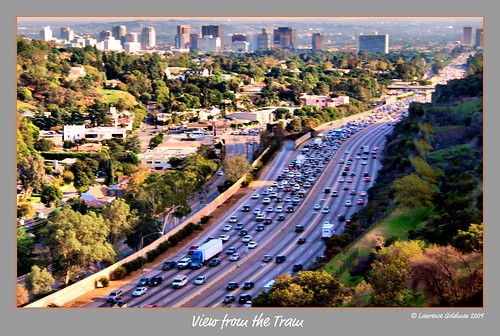More than half of high-speed rail grants will go into freight corridors to build up inter-city passenger service
It took nearly a year and a stubbornly high unemployment rate before the Obama administration recast its long-awaited $8 billion in rail system grants as part of a jobs strategy.
But when the White House unveiled its list of winners for high-speed rail funding, to boost passenger train service between cities, it quickly became clear large parts of it would go into the freight rail corridors that also carry Amtrak trains.
For instance, of the 13 funding corridors that traverse parts of 31 states, just two would be true high-speed passenger lanes with “bullet trains” that would need their own walled-off tracks away from freight operations.
The first phase of a high-speed rail lane in Florida, linking Tampa and Orlando, got a $1.25 billion grant. A California multicity project, including a 220-mph Los Angeles-San Francisco electrified train service, was awarded $2.25 billion.
The remaining $4.5 billion will be spread across what is mainly the freight rail network. Although some money will build or modify passenger stations, much more will go into freight-owned corridors to add or boost passenger use. Grant projects include signal and track upgrades, “flyovers” to eliminate road crossings, new sidings for trains to pass each other, and automated “positive train control” systems that Congress has ordered installed by 2016 on rail lines that have passenger service.
All of this originated with the American Recovery and Reinvestment Act President Obama signed into law last February. Initially, the Federal Railroad Administration expected to cull the deluge of stimulus applications so Transportation Secretary Ray LaHood could award high-speed rail grants last September or October, but the administration put it off four more months.
Meanwhile, with the nation’s jobless rate still at 10 percent as 2010 began, the president began highlighting job-creation plans and timed the high-speed rail announcement for Jan. 28, the day after his State of the Union address.
In return for grant money, freight railroads say they must adjust their operations around passenger service. In most cases, their trains would move along just fine without those upgrades, they say.
But money is heading their way.
One so-called high-speed rail corridor, awarded $1.13 billion, extends from Chicago to St. Louis, and then across Missouri to Kansas City. The planned top speed in Illinois would be 110 mph, within the limits of Amtrak service on upgraded freight line tracks, while the Missouri investment mainly aims to develop reliable on-time passenger service where it usually falls behind schedule.
In North Carolina, projects between Raleigh and Charlotte will get to top speeds of 90 mph, under a $620 million grant for a corridor that includes Richmond, Va., and Washington, D.C.
The Chicago Region Environmental and Transportation Efficiency Program, or CREATE, received $133 million to build what it said is a critical flyover that will eliminate a crowded junction between a commuter line and Norfolk Southern Railway tracks used by Amtrak. CREATE said that stretch handles 78 Metra commuter trains a day and 60 freight trains.
Iowa’s Department of Transportation cheered the award of $17 million “to improve infrastructure on the BNSF line that provides current Amtrak service across southern Iowa” and boost on-time performance.
Contact John D. Boyd at jboyd@joc.com.





















